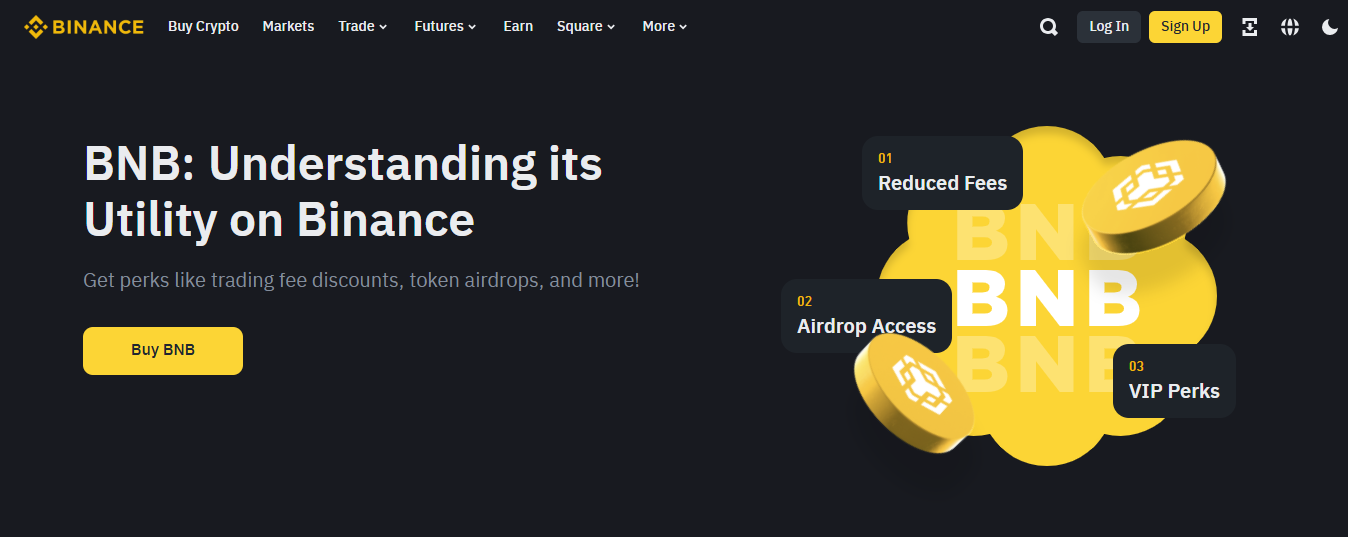Day trading in cryptocurrency markets involves buying and selling digital assets within a single trading day, and since crypto markets operate 24/7 (unlike traditional stock markets), it creates a fast-paced environment with higher volatility. This means that opportunities for quick profits can arise around the clock, but so can the risk of significant losses if trades go away.
In 2025, heightened mainstream attention is expected to attract new crypto investors seeking to exploit market inefficiencies. Many of these individuals are drawn by the allure of rapid gains, particularly in a market known for dramatic fluctuations, but successful day trading requires thorough research, an understanding of risk, and more.
This guide will outline essential crypto day trading strategies, how to pick the right assets, and the steps traders should take to navigate a market filled with both promise and pitfalls.
What is crypto Day Trading?
crypto day trading is the act of buying and selling cryptocurrency assets within a single trading session to profit from short-term price fluctuations. Rather than holding positions for days or weeks, day traders seek to execute trades within hours or even minutes, depending on market conditions.
This form of trading stands out for its rapid pace; participants look for smaller, more frequent gains, closing all positions before the day ends to avoid potential overnight risk. Market volatility is both a friend and foe to day traders. While dramatic swings can create lucrative entry points and exit points, they also expose traders to heightened market risk.
On top of that, crypto day trading differs from standard stock trading in that the crypto market never closes, meaning day traders can operate in a 24-hour environment. This persistent availability can offer more opportunities, yet it demands disciplined time management and the capacity to stay informed around the clock.
Because day trading involves numerous trades with relatively small profit margins per position, transaction costs can quickly add up. Traders must therefore select reliable crypto exchanges with acceptable fees.
Coupled with technical analysis, real-time data tracking, and a solid risk management framework, day trading can become a structured approach to profiting from market trends in a highly dynamic cryptocurrency market.
Best crypto Day Trading Strategies
Day traders in crypto markets employ a variety of tactics to spot price differences and capitalize on short-term volatility. Let’s dig into some of the most common crypto day trading strategies that, when coupled with robust risk management, can boost the odds of success.
1. Momentum Trading
Momentum traders seek to profit from strong price movements driven by news events or large buying volume. They quickly identify assets showing substantial upward or downward movement and jump in with the belief that the trend will continue. News-based trading can also power momentum plays, as unexpected announcements often cause swift market shifts. Traders must be vigilant about exit points, however, since momentum can fade abruptly, leading to rapid reversals.
2. Range Trading
In a range-bound market, traders observe when asset prices bounce between upper and lower levels, known as resistance and support. The strategy involves buying near support and selling near resistance, repeating this process as long as the price remains within the established band. Because cryptocurrencies often exhibit cyclical moves in a tight price range, range trading can be effective if the trader monitors volume and confirms minimal breakouts.
3. Swing Trading
Although swing trading typically extends beyond a day, a condensed variation can still be used for day trading setups. Traders aim to ride a short wave of market trends, before closing positions. They rely on technical indicators like moving average convergence divergence (MACD) or the relative strength index (RSI) to gauge momentum shifts. Profits hinge on identifying micro-trends within a day, distinguishing this from the more patient, multi-day approach of standard swing traders.
4. Scalping
Scalpers target small profits from frequent trades, focusing on assets with robust trading volume and tight bid-ask spreads. Because scalping relies on numerous, tiny gains, controlling transaction costs is crucial. The objective is to enter and exit positions within minutes or seconds, exploiting slight price fluctuations. Scalping demands intense focus, constant chart monitoring, and fast reaction times, making it one of the more fast-paced and high-frequency trading methods.
5. Arbitrage
Arbitrage takes advantage of price differences across different exchanges. A trader may buy a token on one platform where it’s undervalued and sell it on another for a slightly higher price. While this method can be relatively low-risk if executed instantly, market conditions can shift unexpectedly, eroding potential profits. High transaction costs or delays in transferring assets may also limit its viability for day traders.
6. Trading Bots
Some day traders lean on automated systems designed to scan the market for market inefficiencies. These bots can execute trades based on predefined rules, swiftly taking profits or stopping losses without emotional baggage. Nevertheless, traders must regularly review their bot’s performance and adjust parameters to match evolving market volatility. This approach can complement a trader’s fundamental or technical research but should not replace a well-defined trading plan with human oversight.
How to Choose a crypto for Day Trading
Selecting the right crypto asset is a critical decision for day traders hoping to capitalize on short-term price fluctuations. One primary factor is trading volume: higher-volume tokens are often more liquid and easier to buy and sell without significantly affecting the price. Look for coins consistently reporting billions of dollars in daily turnover, which can help ensure your orders execute at near-expected prices.
Another consideration is market capitalization, as large-cap coins like bitcoin and ethereum tend to be more stable than smaller-cap alternatives. However, mid- and low-cap assets sometimes exhibit higher volatility, which can be beneficial if you thrive on capturing big price swings. Weigh your personal risk tolerance against these varying market profiles.
Fundamental research is also important. Tokens associated with credible projects, strong developer activity, and a supportive community are more likely to maintain robust interest even during market dips. Examine a project’s roadmap, partnerships, and use cases to see whether it might sustain long-term growth, thereby offering repeated day trading opportunities.
Make sure you keep tabs on how tokens perform on different exchanges and whether they maintain consistent price ranges. Some coins have sporadic trading on lesser-known platforms, leading to fragmented order books and large bid-ask spreads.
Finally, look for timely news catalysts that could influence price movements, such as major listings, protocol upgrades, or regulatory shifts. By combining these criteria—volume, market cap, fundamentals, and exchange accessibility—you can narrow down your shortlist of assets best suited for crypto day trading strategies.
Best Cryptos for Day Trading
Determining the “best” crypto for day trading depends partly on market trends, a trader’s style, and individual risk tolerance. Nevertheless, there are a handful of coins that stand out due to their liquidity, price volatility, and established user bases. Take a look.
1. bitcoin (btc)
As the largest cryptocurrency market by market cap, btc often sees high trading volume and robust order books. This liquidity helps day traders quickly enter and exit positions, especially useful for strategies like scalping or range trading. Though btc’s volatility is lower than smaller altcoins, it can still produce noteworthy intraday swings.
2. ethereum (eth)

eth boasts a vibrant ecosystem of decentralized applications, leading to substantial daily volume. Its price movements are sometimes more dramatic than btc’s, fitting day traders seeking moderate but frequent volatility. Because it powers many smart contracts, eth remains at the center of developments in DeFi, nfts, and beyond.
3. Binance Coin (BNB)

BNB’s ties to the Binance exchange and ecosystem frequently drive substantial trading interest. The coin’s utility includes fee discounts and participation in token sales, ensuring that both speculators and long-term holders see value in BNB’s price. This dual appeal can support tradable intraday surges.
4. Solana (SOL)

Known for its high-speed transactions and low fees, Solana has cultivated a strong user and developer community, sparking regular surges in volume. Although some consider it riskier than btc or eth, SOL’s volatility appeals to day traders looking for larger price swings.
5. Cardano (ADA)

While its swings may be more moderate, ADA’s standing among top altcoins ensures consistent liquidity. Like ethereum, it has an evolving roadmap of smart contract capabilities, attracting day traders who track the chain’s progress.
Pros and Cons of crypto Day Trading
Pros
- Market volatility can boost small price movements multiple times a day
- 24/7 trading offers around-the-clock opportunities
- Quick trades may lead to fast returns for disciplined traders
- Technical analysis skills can shine in an active environment
Cons
- Rapid price collapses can wipe out gains in seconds
- Frequent trades lead to accumulating transaction costs
- Emotional reactions like FOMO can trigger impulsive trades, so there is a need to implement risk management techniques
- Time-intensive monitoring and stress may outweigh the potential benefits
Things to Avoid When Day Trading crypto
One common mistake is chasing every minor price fluctuation in hopes of quick gains. This approach often leads to overtrading, which racks up transaction costs and increases exposure to bad positions.
Another issue is ignoring a well-defined trading plan. Sticking to predetermined entry and exit rules can curb emotional decisions that derail your long-term objectives.
Impatient traders sometimes abandon thorough technical analysis, jumping into trades on weak signals or purely on hype. This can result in entering positions right before a correction, leading to significant losses. Lack of risk management is another oversight.
Setting proper stop-loss orders and allocating only a fraction of capital to each position prevents individual failures from decimating your entire account.
How to start day trading crypto
Getting into crypto trading, specifically crypto day trading, can feel intimidating, but you can make it far more manageable by following a logical progression.
First, start by researching the best exchanges for day trading, which are typically known for having good liquidity, user-friendly interfaces, and reliable customer support.
Next, think about your trading plan, and set daily or weekly profit goals, maximum permissible losses, and the number of trades that you are aiming to complete. This will help you determine if your approach is viable.
Finally, stay current on market trends by reading reputable crypto news outlets, community forums, or social channels. Pay attention to crucial indicators and adopt a routine of reviewing charts each day. Strong risk management and a calm mindset are vital.
Enter trades when your signals align, exit swiftly upon hitting predetermined targets, and protect positions with stop-loss orders.
Conclusion
Day trading crypto in 2025 provides a dynamic avenue for both experienced market participants and newcomers hunting for short-term gains. By combining crypto day trading strategies with disciplined risk management, you can capitalize on opportunities sparked by 24/7 volatility.
FAQs
Is crypto good for day trading?
crypto’s high volatility and 24/7 market can be beneficial for day traders. Sudden price moves create opportunities but also raise the risk of rapid losses. With proper research, a reliable exchange, and careful discipline, crypto offers a fertile ground for day trading.
Is it profitable to day trade crypto?
Day trading crypto can be profitable, though success is never guaranteed. Consistent gains often require strong technical analysis, disciplined risk management, and constant vigilance. Market conditions can shift quickly, so maintaining flexibility and learning from mistakes is essential to remaining profitable.
How to successfully day trade crypto?
Successful crypto day trading involves selecting the right strategies (such as range trading or momentum plays), sticking to pre-set entry and exit points, and deploying stop-loss orders. Remain focused, avoid chasing the market, and refine your approach based on ongoing performance metrics.
Which crypto is best for day trading?
High-liquidity coins like bitcoin, ethereum, or Binance Coin generally suit day traders due to their robust trading volumes and relatively stable order books. Smaller altcoins can offer bigger price swings but often come with higher risks and inconsistent liquidity.
 NEWSLETTER
NEWSLETTER




